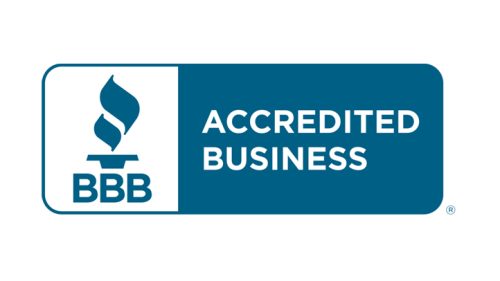Insurance Credentialing Help for Mental Health Providers: Making Your Practice Journey Easier

Mental health providers have unique challenges for insurance participation within the complex healthcare system. Proper credentialing with insurance panels often makes the difference between a thriving practice and one that struggles to achieve financial stability for Psychiatrists, Psychologists, Licensed Clinical Social Workers, Marriage and Family Therapists, or Mental Health Counselors.
Understanding Mental Health Insurance Credentialing
Mental health insurance credentialing refers to the process of having mental health providers verified and approved by insurance companies to join their networks. In other words, it is the complete verification of an individual’s compliance with the standards set by an insurance company regarding education, licensing, experience, and professional standing before that individual can become an in-network provider.
More specifically, for mental health professionals, this process includes:
- License and certification of mental health verified
- Education and training confirmed
- Overview of your job history
- Confirmation of insurance coverage
- Reference and disciplinary action check
- Clinical skills and specialty verification
Though the basic rules of credentialing apply in every area of healthcare, mental health providers often face unique issues in this process. For example, insurance credentialing for therapists often requires a deep understanding of therapy-specific services, telehealth documentation, and supervision structures.
Why Mental Health Providers Need Specialized Credentialing Support
The mental health insurance credentialing process comes with unique considerations that make specialized support particularly valuable:
Complex Specialty Coding
Mental health services often involve coding nuances for proper reimbursement. Insurance credentialing services familiar with mental health practices understand these distinctions and ensure your applications properly reflect your specific services and therapeutic approaches.
Varying License Types
The mental health field encompasses multiple license types, each with different credentialing requirements. Professional credentialing services know how to properly represent LCSWs, LMFTs, LPCs, psychologists, and psychiatrists to insurance panels.
Telehealth Considerations
As telemental health services expand, the documentation required for virtual care credentialing now adds to the burden and differs by insurer. Specialized credentialing services keep track of these changing requirements.
Supervisory Relationships
Many mental health providers work under arrangements of supervision that have to be properly documented during the process of credentialing. Professional services know how to present these relationships correctly to insurers.
Benefits of Professional Insurance Credentialing Services for Mental Health Providers
Insurance credentialing services for mental health providers help streamline the enrollment process, reduce administrative stress, and ensure faster approvals. By partnering with credentialing experts, mental health professionals can focus more on delivering quality care while leaving the complex paperwork and follow-ups to specialists.
Time Savings
Average time taken by a mental health provider on each application for credentialing, in case of handling the process by himself/herself, is 15-20 hours. Now multiply that by 5-10 insurance panels and see the time commitment become overwhelming. Professional services will take this administrative burden off your hands so that you can concentrate on patient care.
Higher Acceptance Rates
Knowledgeable credentialing experts know the typical mistakes that cause an application to be rejected or delayed. Their experience translates into more accurate submissions and a higher first-pass approval rates.
Fast Processing Times
Professional credentialing services keep relationships with provider representatives at major insurance companies. These contacts, along with strategic follow-up processes, make it possible to get the application processed quickly in many cases.
Reduced Administrative Burden
Beyond the first use, credentialing needs continued follow-up, documentation management, and continued maintenance. Professional services take care of these duties so that the administrative workload on you and your staff is reduced.
Expert Contract Negotiation
Many credentialing services help contract review and negotiations to obtain good reimbursement rates for mental health services after approval.
What Mental Health Insurance Credentialing Services Typically Include
These are the main things to look for when checking out credentialing services for your mental health practice:
Initial Credentialing
- Creation and maintenance of CAQH ProView profile
- Preparation and submission of primary insurance applications
- Collection and verification of documentation
- Strategic payer selection based on the specialty and location
- Regular status updates throughout the process
Follow-Up Management
- Insurer communication maintained
- Additional information request responded to immediately
- Application tracked until completion
- All interactions with payers are documented hereinafter.
Contracting Support
- Proposed contract terms reviewed herein.
- Reimbursement rates for mental health services guidance.
- Assistance with contract negotiations if possible.
- Terms and obligations of contract explained herein.
Enrollment Completion
- Date effective verification with each insuring company
- Billing procedures and requirements confirmation
- Testing claims submission process where available
- Electronic funds transfer for reimbursement set up
Ongoing Support
- Recredentialing management
- License and certification renewal tracking
- Update to insurance companies on change in practice info
- Help with adding new mental health service locations
How to Choose the Right Credentialing Service for Your Mental Health Practice
Not all credentialing services offer the same level of expertise or support. When choosing a partner for your mental health practice, consider these factors:
Mental Health Specialization
Look for services with specific experience in mental health insurance credentialing. They should understand the unique aspects of mental health billing, coding, and documentation requirements.
Success Rate
Inquire about their success in getting mental health providers credentialed with major insurance panels and ask for references from other mental health practitioners they have successfully credentialed.
Comprehensive Service Model
Make sure they handle the whole process from application to enrollment, not just the first submission. The follow-up process is often where credentialing efforts succeed or fail.
Transparent Pricing
Understand their fee structure Some services charge per application, others per insurance company, and some offer comprehensive packages ensure there is no hidden cost.
Communication Style
Choose a service that gives you regular updates and responds to your questions on time. A breakdown in communication can lead to missed deadlines and delayed approvals.
The Investment: Understanding Credentialing Service Costs
The cost of mental health insurance credentialing services typically falls into one of these structures
- Per-payer fees: $300-600 for each insurance company
- Monthly retainer models: $250-500 per month while actively being credentialed
- Comprehensive packages: $1,500-3,000 for limited panels of insurance
However high these costs may seem, think about:
- What your clinical time is worth compared to this paperwork
- The revenue that could be generated by getting in-network with large insurers
- Mistake costs in terms of delayed approvals/resubmissions
- Administrative burden of keeping credentialing up yourself
Professional credentialing services for most mental health practices represent a wise investment with returns that can be measured through increased patient volume and reliable reimbursement.
Take This Next Step: Implement Credentialing Support
For mental health providers looking to make their insurance participation smoother, the steps to engage credentialing services are usually:
- First meeting to talk about your practice needs and goals
- Collecting and organizing documents
- Planning how to choose an insurance panel
- Application prep and submission
- Regular updates during the process
- Contract check and enrollment finish
- Switch to ongoing credential management
The earlier you start this procedure, the earlier your practice will gain from increased insurance participation and improved cash flow.
Conclusion
For mental health providers, successful insurance credentialing is a huge opportunity to grow your practice and make accessible care available to more patients. While the process seems intimidating if tackled individually, specialized mental health insurance credentialing firms bring in an approach to streamline the process, reduce administrative burden, and bring in faster results.
By teaming up with seasoned experts who understand the complexities of running a mental health practice, you can easily navigate the world of insurance participation so that you can focus on what matters most, quality care for your patients.
Credex Healthcare offers specialized credentialing services designed specifically for mental health providers, with a proven track record of success in securing insurance panel participation across all mental health disciplines. Contact us today to discover how we can simplify your path to practice success.
Common Questions About Mental Health Insurance Credentialing
How long does the credentialing process take for mental health providers?
Generally, it takes about 90-180 days from the date of submission to approval; however, psychiatric providers may sometimes experience longer timelines due to additional verification requirements.
Which insurance panels should mental health providers join?
This depends on your location and specialty, but most practices would benefit from joining the major national carriers (Blue Cross Blue Shield, Aetna, Cigna, United Healthcare) and dominant local insurers. Also important is Medicare and Medicaid credentialing for those providers who serve these populations.
Can I see patients while waiting for my credentials?
Yes but typically only as an out-of-network provider or self-pay patient until your in-network status is confirmed. Some practices take this time to build relationships with the patients and let them know about the insurance status pending.
What happens if my credentialing application gets denied?
A professional credentialing service can help you understand why and how to strategize for reapplication. Common reasons include not filling out the information completely, not meeting some requirement, or closed panels.
Do I need to be credentialed at every practice location?
Yes, most insurance plans require separate credentialing for each physical location where services are provided, though some will allow multiple under certain conditions.



















